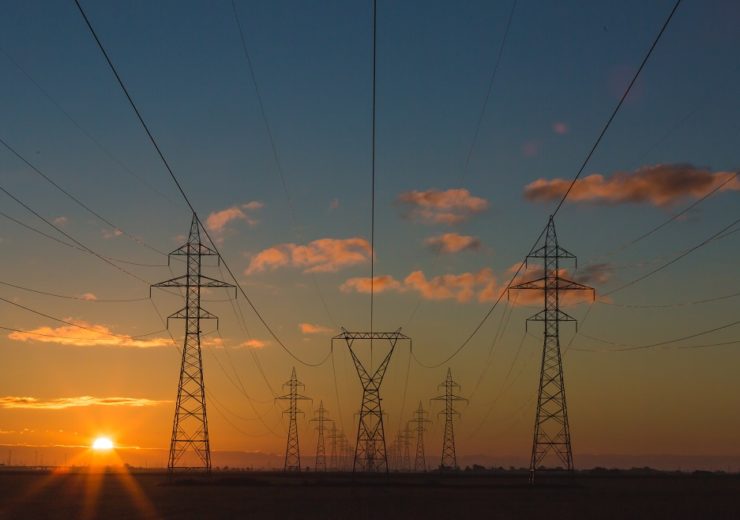With the energy transition well underway, disruptive technologies such as blockchain might hold the key to effectively tracking carbon emissions across the supply chain

Digitally tracing the journey from extraction to grid supply can help the energy industry keep track of its emissions footprint
As energy systems target decarbonisation, promoting transparency will be a key tactic in ensuring entities across the global supply chain meet new emissions standards — and blockchain could have a role to play. Here, Joan Collell, business strategy leader and CCO at energy technology specialist FlexiDAO, discusses the challenges of tracing emissions across complex global supply networks, and how the disruptive distributed ledger technology can help tackle them.
A lot has been debated about how to assess if a product is truly sustainable. Is it enough to just look at the emissions of the company that sells it to the end customer?
We first need to assess a product’s impact throughout all the stages of its life cycle, from the extraction of raw materials (cradle) through to disposal (grave) or recycling process (cradle).
This measurement process is called Life Cycle Assessment (LCA) – the calculation and evaluation of all the different impacts a product or project can have on environmental, social and economic aspects.
In the end, what is a product other than the result of all its productive steps?
The problem is that in a global world all these productive steps are geographically scattered, performed by several different actors or entities, in several different facilities, with the use of several different technologies.
Globalisation has vastly increased the complexity of supply chains, and poses several challenges in terms of controlling and monitoring these impacts at each stage of the life cycle. This is also down to the fact that companies often have a limited view of their boundaries.
Scope 3 emissions are difficult to measure, but need to be taken into account
It is relevant to analyse how this affects carbon-emissions calculation — which can be evaluated within three categories:
Scope 1 emissions are those resulting directly from the company-owned or controlled sources; Scope 2 emissions are those indirectly generated from the energy bought and consumed during production; Scope 3 emissions are all the indirect emissions throughout the value chain of a product or company – including during a product’s use by the end consumer.
Scope 3 emissions, therefore, are the most comprehensive measure of impact, but they are also the hardest to calculate. They can amount to almost 75% of a product’s total emissions footprint.
This represents a big elephant in the room, because measuring all supply-chain emissions requires a high level of integration and co-ordination between multiple supply chain networks.
Different entities have to share the necessary data for the sustainability certification of products and to guarantee their traceability. This is an essential step, since everything that can be quantified is no longer a risk, but it becomes a management problem.
Data-driven traceability and transparency are key to monitoring emissions
Data sharing can have two main purposes — transparency and traceability. These terms are often confused, but they imply different goals.
Transparency aims to catch high-level information from supply chains, mapping the value chain network in terms of names of suppliers, location of facilities, products’ attributes and certification.
The main goal of increasing transparency is to make clearer the paths a product follows throughout supply chains, and to collect information about the actors involved at each stage.

Traceability instead requires a higher degree of granularity of the information shared — for example, dates and locations of purchases of product components, specific properties of the items or more operational information.
The goal of increasing traceability is to allow more precise measurability of impacts at each stage of the supply chain — but we need to remember that increasing traceability and transparency is not the final goal, but only the first essential step for emissions reduction.
It allows the development of data-driven strategies, and the verification of sustainability claims. Clear proof is the fact that Forest 500, CDP, SPOTT and other certifiers, take traceability into account when assessing companies’ performance.
Normally, transparency represents the first step to achieve a higher degree of traceability. It is already extremely complicated to track physical flows of materials throughout international supply chains, but when it comes to commodities like energy, the story gets even more complex.
Blockchain can digitally certify the emissions footprint of energy production throughout a supply chain
Tracking the energy flow of electrons is impossible for physical reasons, since when electrons are injected into the grid they mix with all other electrons generated from different sources — resulting in what is defined as grey energy.
But if it is not possible to track electrons, it is possible to track the time and location of their production, and to match data of generation and consumption in real time.
The distributed ledger of blockchain can register in real time the consumption data of different entities across different locations and calculate the carbon intensity of that consumption.
It can then be ensured through the automatic assignment of a certificate that comes bundled with the energy transferred, which proves where and when the energy was produced.
Blockchain can enhance the energy system by providing trust, traceability, and auditability. This is possible through a digital process called “tokenisation of electricity”, through which units of electricity become digital goods/assets, allowing for automatic certificate generation (timestamping), as well as transfers and ownership-tracking based on cryptographic proof.
This also ensures that certificates are only sold once and that there is no double counting. Auditors can trace electricity consumed in the supply chain back to any stage of its life cycle.
This represents the only true way to reduce carbon emissions across the supply chain — to be totally green every hour, and blockchain can be useful to prove it in real time.
Reliable supply-chain tracking of energy and emissions is no longer a dream thanks to the disruption of new technologies. The time might have arrived to start looking at those 75% of carbon emissions that were hidden deep in supply chains.
